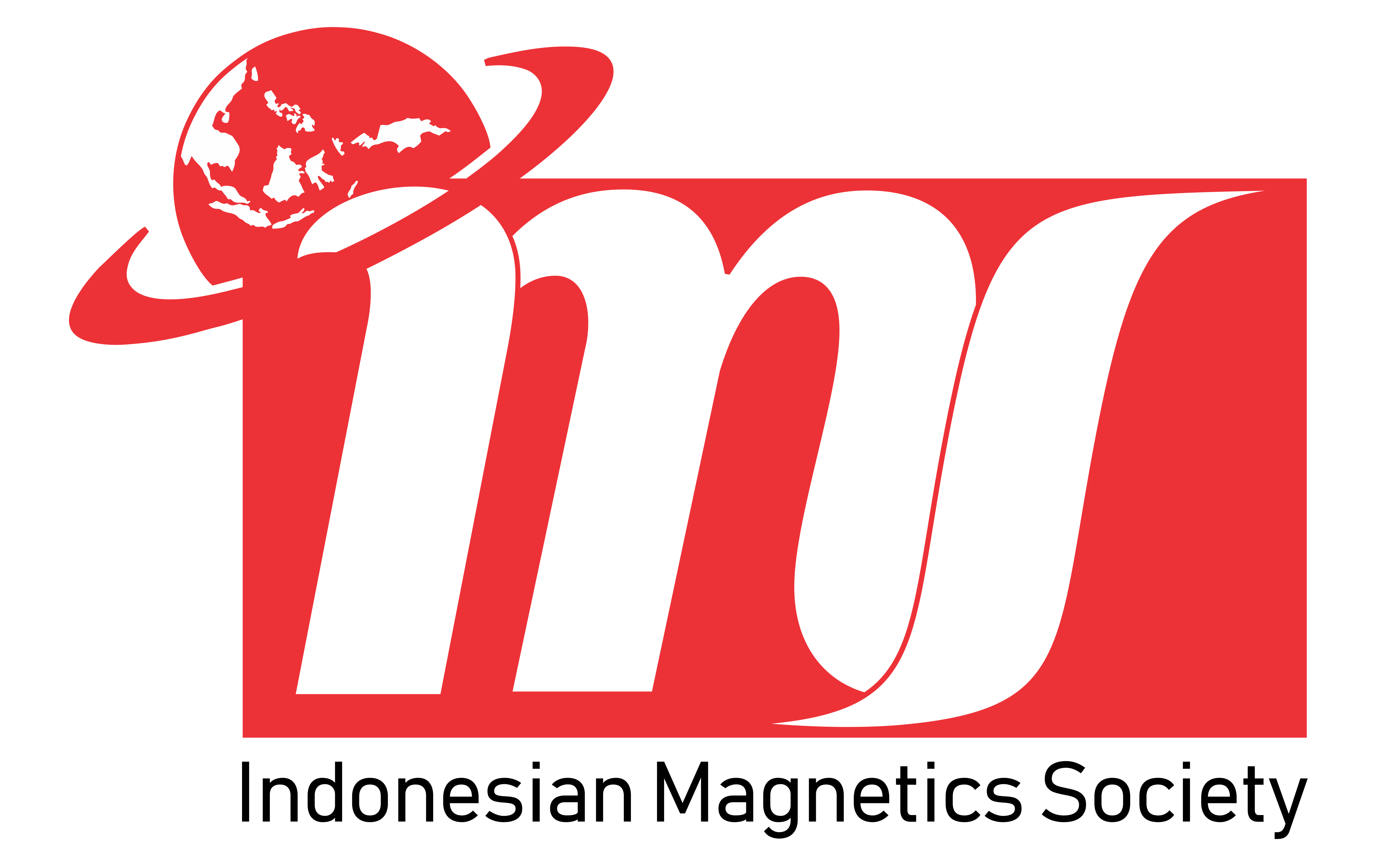Theoretical study of the II-VI solar cells semiconductor material arrangements effect using the one-dimensional Schrodinger equation
Abstract
Keywords
Full Text:
PDFReferences
Abbaspour, S., Mahmoudian, B., & Islamian, J. P. (2022). Cadmium Telluride Semiconductor Detector for Improved Spatial and Energy Resolution Radioisotopic Imaging. World Journal of Nuclear Medicine, 16(2), 101-107. http://dx.doi.org/10.4103/1450-1147.203079
Abdy, M., Ihsan, H., & Dewi, D. A. R. (2021). Solusi Persamaan Schrodinger dengan menggunakan Metode Transformasi Diferensial. JMathCos (Journal of Mathematics, Computations, and Statistics), 4(1), 47-54. http://dx.doi.org/10.35580/jmathcos.v4i1.20449
Agustin, N. C., Nugroho, C. I. W., & Pratama, M. A. (2019). Koefisien Transmisi InN (Indium Nitrit) Penghalang Tunggal hingga Penghalang Tiga dengan Metode Schrodinger. Seminar Nasional Pendidikan Fisika, 4, 102-106.
Alawiyah, S., Azwar, A., & Noor, F. A. (2022). Studi Pengaruh Lapisan Pelindung pada Material Fotokatalis Cadmium Sulfida (CdS) terhadap Transmisi Elektron dan Hole berdasarkan Model Mekanika Kuantum Sederhana. Prisma Fisika, 10(3), 436 – 441.
Alshahrani, B., Nabil, S., Elsaeedy, H. I., Yakout, H. A., & Qasem, A. (2021). The Pivotal Role of Thermal Annealing of Cadmium Telluride Thin Film in Optimizing the Performance of CdTe/Si Solar Cells. Journal of Electronic Materials, 50(8), 4586-4598. https://doi.org/10.1007/s11664-021-08989-3
Arquer, F. P. G., Talapin, D. V., Klimov, V. I., Arakawa, Y., Bayer, M., & Sargent, E. H. (2021). Semiconductor Quantum Dots: Technological Progress and Future Challenges. Science, 373, 1-14. https://doi.org/10.1126/science.aaz8541
Baines, T., Zoppib, G., Bowenc, L., Shalveya, T. P., Mariottia, S., Durosea, K., & Major, J. D. (2018). Incorporation of CdSe Layers into CdTe Thin Film Solar Cells. Solar Energy Materials and Solar Cells, 180, 196-204. https://doi.org/10.1016/j.solmat.2018.03.010
Bosio, A., Pasini, S., & Romeo, N. (2020). The History of Photovoltaics with Emphasis on CdTe Solar Cells and Modules. Coatings, 10(4), 1-30. http://dx.doi.org/10.3390/coatings10040344
Devendra, K. C., Shah, D. K., Alanazi, A. M., & Akhtar, M. S. (2021) Impact of Different Antireflection Layers on Cadmium Telluride (CdTe) Solar Cells: A PC1D Simulation Study. Journal of Electronic Materials, 50(4), 2199-2205. https://doi.org/10.1007/s11664-020-08696-5
Huda, M. K., Prastowo, S. H. B., & Ridlo, Z. R. (2018). Analisis Efek Terobosan Empat Perintang pada Graphene. Seminar Nasional Pendidikan Fisika, 3(2), 153-158.
Iqbal, M., Ali, A., Nahyoon, N. A., Majeed, A., Pothu, R., Phulpoto, S., & Thebo, K. H. (2019). Photocatalytic Degradation of Organic Pollutant with Nanosized Cadmium Sulfide. Materials Science for Energy Technologies, 2(1), 41–45. https://doi.org/10.1016/j.mset.2018.09.002
Kagan, C. R., Lifshitz, E, Sargent, E. H., & Talapin, D. V. (2016). Building Devices from Colloidal Quantum Dots. Science, 353(6302), 1-9. https://doi.org/10.1126/science.aac5523
Kapadnis, R. S., Bansode, S. B., Supekar, A. T., Bhujbal, P. K., Kale, S. S., Jadkar, S. R., & Pathan, H. M. (2020). Cadmium Telluride/Cadmium Sulfide Thin Films Solar Cells: A Review. ES Energy & Environment, 10(1), 3-12. https://dx.doi.org/10.30919/esee8c706
Liu, M., Yazdani, N., Yarema, M., Jansen, M., Wood, V., & Sargent, E. H. (2021). Colloidal Quantum Dot Electronics. Nat Electron, 4(8), 548–558. https://doi.org/10.1038/s41928-021-00632-7
Lombu, O. Z., Simbolon, T. R., & Ginting, T. (2013). Aplikasi Metode Beda Hingga pada Persamaan Schrodinger menggunakan Matlab. Saintia Fisika, 3(1), 1-7.
Mazing, D. S., Brovko, A. M., Matyushkin, L. B., Aleksandrova, O. A., & Moshnikov, V. A. (2015). Preparation of Cadmium Selenide Colloidal Quantum Dots in Non-Coordinating Solvent Octadecene. Journal of Physics: Conference Series, 661, 1-4. https://doi:10.1088/1742-6596/661/1/012033
McHugh, K. J., Jing, L., Behrens, A. M., Jayawardena, S., Tang, W., Gao, M., Langer, R., & Jaklenec, A. (2018). Biocompatible Semiconductor Quantum Dots as Cancer Imaging Agents. Advanced Material, 30(18), 1-18. https://doi.org/10.1002/adma.201706356
Nasiroh, C., Supriadi, B., & Handayani, R. D. (2020). Tunnelling Effect for Quadruples Potential using Matrix Propagation Method. Indonesian Review of Physics (IRiP), 3(2), 66-73. https://10.12928/irip.v3i2.3066
Ong, R. (2022). Perhitungan Koefisien Transmisi pada Struktur Superlattice menggunakan Metode Propagasi Matriks. FISITEK: Jurnal Ilmu Fisika dan Teknologi, 6(1), 30-39.
Prastowo, S. H. B., Supriadi, B., Ridlo, Z. R., & Prihandono, T. (2018). Tunneling Effect on Double Potential Barriers GaAs and PbS. Journal of Physics: Conference Series, 1008, 1-7. https://doi.org/10.1088/1742-6596/1008/1/012012
Prastowo, S. H. B., Supriadi, B., Ridlo, Z. R., Huda, M. K., Bariroh, W., & Sholihah, U. (2019). Theoretical Analysis Quantum Tunneling Three Potential Barriers to The Schrodinger Equation in Graphene. Journal of Physics: Conference Series, 1211, 1-9. http://dx.doi.org/10.1088/1742-6596/1211/1/012055
Rahman, M. F., Hossain, J., Kuddus, A., Tabassum, S., Rubel, M. H. K., Shirai, H., & Ismail, A. B. M. (2020). A Novel Synthesis and Characterization of Transparent CdS Thin Films for CdTe/CdS Solar Cells. Applied Physics A, 126(2), 1-11. https://doi.org/10.1007/s00339-020-3331-0
Rani, S., Rajan, S. T., Shanthi, J., Ayeshamariam, A., & Jayachandran, M. (2015). Review on The Materials Properties and Photoelctrochemical (PEC) Solar Cells of CdSe, Cd1-xZnxSe, Cd1-xInxSe, Thin Films. Materials Science Forum, 832(1), 1-27. http://dx.doi.org/10.4028/www.scientific.net/MSF.832.1
Romeo, A. & Artegiani, E. (2021). CdTe-Based Thin Film Solar Cells: Past, Present and Future. Energies, 14(6), 1-24. http://dx.doi.org/10.3390/en14061684
Samoilenko, Y., Yeung, G., Munshi, A. H., Abbas, A., Reich, C. L., Walker, M., Reese, M. O., Zakutayev, A., Walls, J. M., Sampath, W. S., & Wolden, C. A. (2020). Stable Magnesium Zinc Oxide by Reactive Co-Sputtering for Cdte-Based Solar Cells. Solar Energy Materials and Solar Cells, 210, 1-8. https://doi.org/10.1016/j.solmat.2020.110521
Selopal, G. S., Zhao, H., Wang, Z. M., & Rosei, F. (2020). Core/Shell Quantum Dots Solar Cells. Adv. Funct. Mater, 30(13), 1-21. https://doi.org/10.1002/adfm.201908762
Shaikh, A. V., Sayyed, S. G., Naeem, S., Shaikh, S. F., & Mane, R. S. (2021). Electrodeposition of n-CdSe/p-Cu2Se Heterojunction Solar Cells. Engineered Science, 13, 79-86. https://dx.doi.org/10.30919/es8d1124
Sharma, S., Dutta, V., Raizada, P., Bandegharaei, A. H., Singh, P., & Nguyen, V. H. (2021). Tailoring Cadmium Sulfide‑Based Photocatalytic Nanomaterials for Water Decontamination: A Review. Environmental Chemistry Letters, 19(1), 271-306. https://doi.org/10.1007/s10311-020-01066-x
Suarso, E. (2013). Sintesis dan Karakterisasi Nanopartikel CdSe Quantum Dots (QDS). Jurnal Fisika FLUX, 10(2), 179–191.
Supriadi, B., Nasiroh, C., Pratikha, A. R., Kaulyn, M. A., Putri, D. K. S., & Anggraeni F. K. A. (2021). Transmittance on Combinatorial Structures of Triple Potential Barriers. Journal of Physics: Conference Series, 1832(1), 1-9.
Supriadi, B., Pingki, T., Mardhiana, H., Faridah, N., Istighfarini, E. T., & Subiki. (2023). Transmission Coefficient of Triple Potential Barrier Combination Structure using Two-Dimensional Schrodinger Equation. Series Title: Advances in Physics Research, 6, 146-155. https://doi.org/10.2991/978-94-6463-138-8_13
Supriadi, B., Prastowo, S. H. B., Amrullah, A. F., & Ridlo, Z. R. (2017). Solusi Efek Terobosan Penghalang Ganda dengan Persamaan Schrödinger Dua Dimensi. Seminar Nasional Fisika (SNF), 1, 42-48.
Supriadi, B., Ridlo, Z. R., Yushardi, Nugroho, C. I. W., Arsanti, J., & Septiana, S. (2019). Tunneling Effect on Triple Potential Barriers GaN, SiC and GaAs. Journal of Physics: Conference Series, 1211, 1-8. http://dx.doi.org/10.1088/1742-6596/1211/1/012034
Supriadi, B., Rizky, N., Yushardi, Agustin, N. C., Epiningtiyas, S., & Makmun, M. S. (2020). Analysis of The Relationship Between the Distance Barriers GaAs and GaAs with The Transmission Coefficient and The Reflection Coefficient. Journal of Physics: Conference Series, 1538, 1-8. https://10.1088/1742-6596/1538/1/012039
Refbacks
- There are currently no refbacks.







